Recent Mold Remediation Posts
Mold: Common Types Found In Homes
8/10/2018 (Permalink)
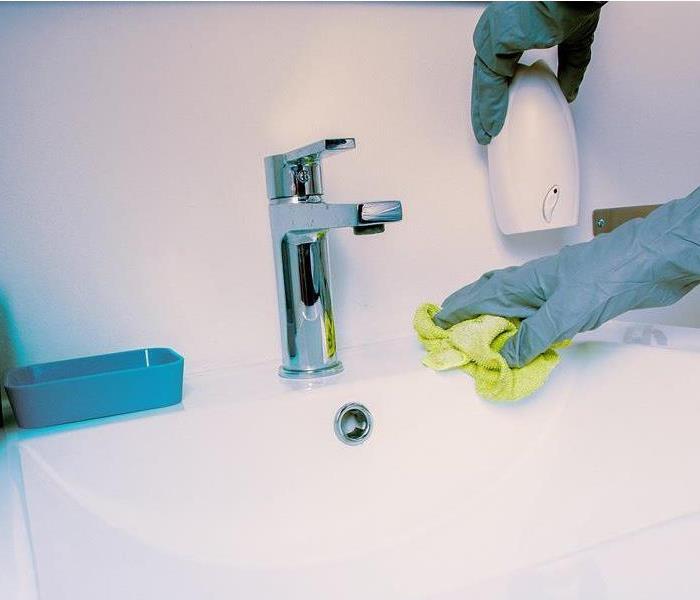 Mold is a health issue but you need to know what type of mold you're dealing with
Mold is a health issue but you need to know what type of mold you're dealing with
Mold comes in many types and forms. In fact, there are more than 100,000 types of mold including about 150 types of mold found in homes--each of which can have several subtypes. The good news is that most people tolerate exposure to moderate levels of many different molds without any apparent adverse health effects. The bad news? Some molds may cause health effects.
In this post you’ll learn about identifying some common types of mold in your home.
The most common types of mold you may find in your home include aspergillus, cladosporium, and stachybotrys atra (black mold).
Aspergillus is a fairly allergenic mold that is commonly found on foods and in home air conditioning systems. Cladosporium is typically a black or green "pepper like" substance that grows on the back of toilets, painted surfaces and fiberglass air ducts.
Black Mold (Stachybotrys Atra)
Black mold is most likely to appear in your home in places that are particularly warm, humid, and damp—like basements or crawlspaces that may have leaks or other sources of moisture. You can identify black mold by its black color. Most other molds are green or gray in color.
Removing black mold is a step-by-step process that requires patience, an investment in protective gear, black mold removal products, and the courage to brave dark, cramped spaces inhabited by fungus. These are among the reasons why many homeowners hire SERVPRO of Bloomfield/Enfield to remove black mold.
We know mold. Call SERVPRO Bloomfield/Enfield at (860) 216-2785
Mold or Mildew: What’s the Difference?
Mold and mildew are types of fungi. Typically, mold is black or green, and mildew is gray or white. Mold tends to grows on food, while mildew grows on damp surfaces, like bathroom walls, basement walls, or fabrics. Mold grows in the form of multicellular filaments or hyphae, while mildew has flat growth. Mildew is often referred to as a kind of mold.
Orange or Red Mold
Mold that appears to be orange or red in color is usually found outdoors. It thrives on decaying plants and moist wood. This type of mold, which can appear slimy, is harmless. The main reason to remove it (should you decide to) is for appearances.
Aureobasidium
Often referred to as “bathroom mold,” aureobasidium is found on caulk, windows, bathtubs, and showers. It’s a black mildew.
We know mold. Call SERVPRO Bloomfield/Enfield at (860) 216-2785
Wallemia
This type of mildew is relatively harmless and grows in dust in homes. Wallemia does not need moisture to grow.
Fusarium
This toxic mildew is very common after a flood. Exposure to fusarium may cause some negative health symptoms.
The Importance of Testing
Unfortunately, you can’t identify most types of mold in your home with a photograph or with your naked eye. Most molds look similar. What you can do is send a sample for black mold testing to a qualified mold laboratory.
Remember that it’s critical to know the types of mold and the amounts you inhale. If you’re concerned, consider testing the air in your home or call SERVPRO of Bloomfield/Enfield.
SERVPRO of Bloomfield/Enfield
Top 50 Franchise Nationally
100 Peters Road, Bloomfield, CT 06002
IICRC Certified
Ralph DiCristofaro
Certified SERVPRO technician
Call 860.216.2785
24-hour emergency service
Mold: Before You Begin Mold Removal
6/21/2018 (Permalink)
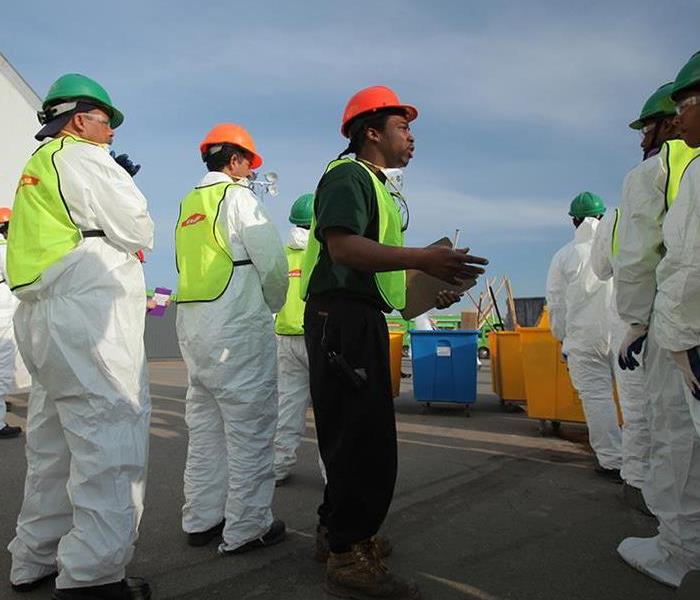 SERVPRO technicians are highly trained in mold remediatiion
SERVPRO technicians are highly trained in mold remediatiion
When you work with mildew, mold, or the water-damaged materials that mold thrives in, you must practice good principles of water damage restoration. Dealing with mold and water-damaged materials opens you up to a range of health and safety concerns.
Some of those concerns are: exposure to microbial contaminants, chemicals, lead, asbestos, electrical shock, and slip-and-fall hazards.
Here are some general guidelines and items to consider.
1. Use professional moisture detection equipment so you can accurately measure and document the conditions.
2. Wear proper protective equipment.
We know mold. Call SERVPRO Bloomfield/Enfield at (860) 216-2785
3. Be sure to inform any building occupants of the water-damage issue and protect them from any health and safety issues.
4. Evaluate and document the source and time of the water event. This should include examining visible material deterioration, pre-existing damage, and microbial growth.
5. Professional water-damage restorers set moisture content or drying goals. You may need separate goals for water-damaged building materials, furniture, and other contents based on the extent of the damage and the material damaged.
6. Be sure to include any other interested people in your goal-setting. All interested parties should agree on the plan of attack, the drying standard, and more. Agreement and communication before you begin eliminates the risk of disagreement or disappointment after the water-damage restoration and mold removal is complete.
We know mold. Call SERVPRO Bloomfield/Enfield at (860) 216-2785
7. Removing mold and water damage is a process. You want to record, calculate, and document moisture measurements throughout the process. SERVPRO of Bloomfield/Enfield recommends daily documentation. With frequent progress checks you can make adjustments any time you think the drying process is not proceeding as planned.
8. Remember to identify and correct or control any issues that contributed to the mold or water damage in the first place. You do not want to clean out mold and restore water-damage without doing all you can to prevent the same problem from reoccurring. Leaking pipes must be fixed. Poor drainage has to be addressed.
9. One variable to track during mold removal and water-damage restoration is room temperature. Controlling the room temperature will enhance the evaporation rate and the effectiveness of dehumidification. And, microbial growth is sometimes related to the temperature.
10. Removing mold and restoring water-damage materials should be followed by cleaning. The type and extent of cleaning depends on the scope of the damage and the type of damage. But cleaning is always important in helping to prevent future issues and restoring your property to its best possible condition.
SERVPRO of Bloomfield/Enfield
Top 50 Franchise Nationally
100 Peters Road, Bloomfield, CT 06002
IICRC Certified
Ralph DiCristofaro
Certified SERVPRO technician
Call 860.216.2785
24-hour emergency service
Removing Mold From Walls Part II
5/11/2018 (Permalink)
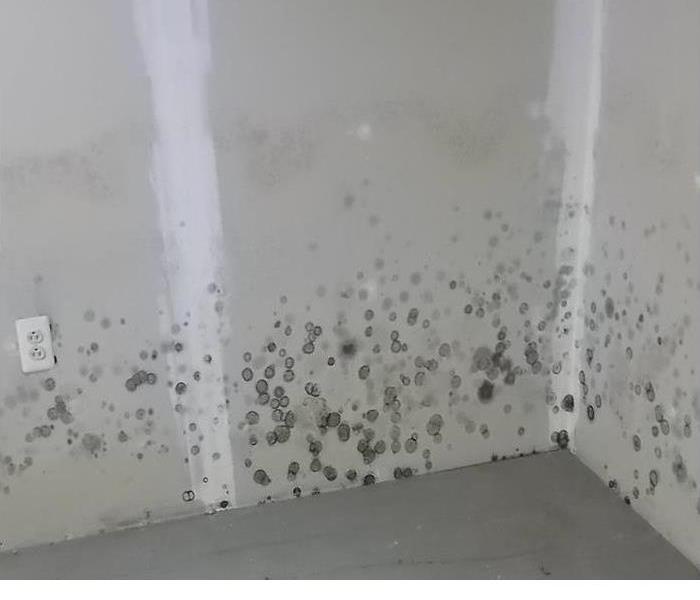 You can control mildew and mold if you use proper procedures and equipment
You can control mildew and mold if you use proper procedures and equipment
In the first of these posts we talked about the need for a thorough assessment of the mold problem (step 1) and about properly preparing the area and yourself (step 2). Once you’ve prepared you’re ready to remove the mold and apply a stain-blocking paint.
Step 3: Remove the Mold
Here’s some good news. The best way to remove mildew and mold from walls is also an easy and cheap way. Use a bleach/water solution. (Reminder: Mildew is a surface type of mold that won’t damage your home’s structure but still needs to be removed.) Mix one part bleach to three parts water. Apply that solution with a sponge or rag. There are also a number of commercial solutions you can find at your local hardware store.
Remember to always use waterproof rubber gloves and goggles when you’re working with bleach. If your kitchen or bathroom has tile grout you may find patches of mildew in the grout. You can scrub it away with an old toothbrush. Be sure to wash down the walls after you’ve scrubbed.
More Details on What to Wear, How to Prepare & Clean Up
We provided this information in part one of this blog, but we know some of our blog readers don’t always see every post, so here’s the info again. This is important. Wear old clothes and shoes. Either launder or throw the clothes and shoes away when you’re done. Wear a N-95 or P-100 respirator along with goggles and long rubber gloves. Set an old box fan or a cheap new one in a window to ventilate the room while you work. Throw the fan out when you’re done cleaning, because the spores are almost impossible to clean off.
Tape plywood or cardboard around the window openings so the spores can’t blow back into your house. Wrap and tape any moldy carpeting in plastic, and double-bag mold-infested debris in garbage bags for disposal. To control airborne spores, you can moisten moldy areas with a garden sprayer while you work. Turn off your furnace and air conditioner and cover ducts and doors to contain spores. Keep your wet/dry vacuum outside when you vacuum.
We know mold. Call SERVPRO of Bloomfield/Enfield At (860) 216-2785
Step 4: Apply a Stain-Blocking Paint
Once you’ve removed the mold, you may have stains left on the wall surfaces. Prime the wall with a good interior primer/sealer and paint over the stains.
Step 5: Prevent More Mold
It’s best to not consider yourself done when all the mold is gone. SERVPRO of Bloomfield/Enfield recommends you also take steps to reduce the risk of any mildew or mold growing in the future. The key to stopping most mold is to control dampness. The worst mold infestations usually occur in damp crawlspaces, in attics and walls where water has leaked in from the outside, and in basements with poor foundation drainage. Be sure to stop leaks, ensure good ventilation in attics, keep crawlspaces dry, and route water away from your home’s foundation.
Congratulations, you’re done! Stay vigilant and look for potential signs of mold by keeping in mind where and how it can grow.
Help Is Here
The team at SERVPRO of Bloomfield/Enfield has specialized training and experience in fire restoration services, natural disaster prevention, water damage, mold remediation, and natural disaster cleanup. Call SERVPRO of Bloomfield/Enfield (860.216.2785) anytime.
SERVPRO of Bloomfield/Enfield
100 Peters Road, Bloomfield, CT 06002
IICRC Certified
Ralph DiCristofaro, Nat Langan, Ron DeFeo
Certified SERVPRO technicians
Call 860.216.2785
24-hour emergency service
Removing Mold from Walls Part 1
4/30/2018 (Permalink)
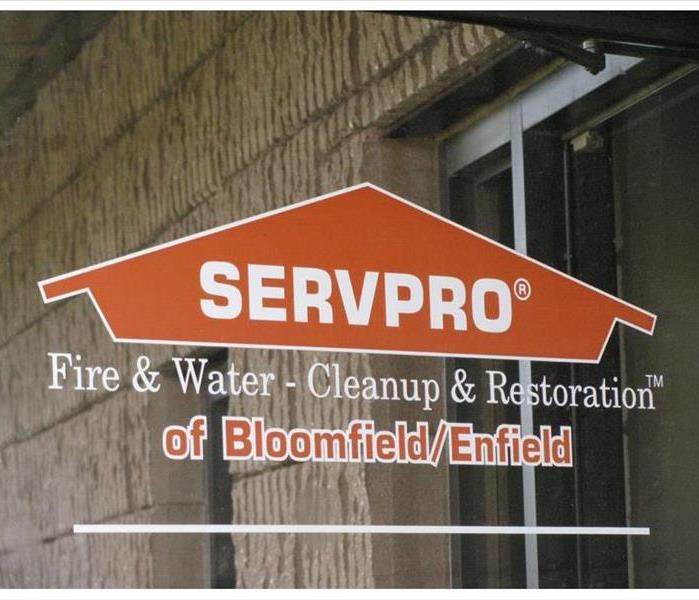 We know mold and mold remediation
We know mold and mold remediation
A major mold infestation can ruin your home and your health. Don’t let that happen. Mold releases microscopic spores that cause health effects, as well as irritating, even injurious, odors. Try to avoid mildew and mold and deal with a small amount of mold as soon as you see it.
You may find mold on drywall or painted interior walls. Mold’s more likely to grow in kitchens and bathrooms where you have moisture and humidity. Your interior walls can also become mold breeding grounds if your roof or exterior walls let water in. In severe cases, when drywall remains wet, mold can begin to grow and penetrate throughout the drywall and you must remove and replace the entire sheet of drywall.
Step 1: Closely Examine the Area
If you spot mold on any interior wall, first assess the damage. How large an area is affected? What is the condition of the wall? Has the integrity or strength of the drywall been compromised? If your drywall is compromised, crumbling, bowed out, or covered with black or bluish splotches, remove and replace it. If the wall is structurally sound but covered with mold, you should be able to remove the spots with a cleaner and a lot of scrubbing.
Use caution, especially if the mold is extensive. Disturbing big infestations of mold can be bad for your health, particularly if you are an allergy sufferer or have a weakened immune system. At times, you’re better off calling the mold professionals SERVPRO of Bloomfield/Enfield to remediate your walls. This is always true after extensive water damage from flooding or another major natural catastrophe. In those cases and others, you probably have "black mold." As a general rule, if the mold covers more than 10 square feet call in the professionals. Or call your local public health department and ask for mold-testing advice.
We know mold. Call SERVPRO Bloomfield/Enfield At (860) 216-2785
Step 2: Prepare the Surrounding Areas & Yourself
To fight mold you have to use some pretty strong and potentially harmful substances like bleach or commercial mold-killing chemicals. That means you want to protect surrounding surfaces like flooring, window frames, and nearby walls from any spills. Cover your floor with plastic drop cloths. Tape them in place so they don't move. Cover nearby window frames, walls, etc. with plastic sheets securely taped into place. Have some old towels handy to catch any spills. It’s also important that you wear protective equipment. Wear waterproof rubber gloves and goggles.
More on What to Wear, How to Prepare & Clean Up
Wear old clothes and shoes. Either launder or throw them away when you’re done. Wear a special N-95 or P-100 respirator along with goggles and long rubber gloves. Set an old box fan or a cheap new one in a window to ventilate the room while you work. Throw the fan out when you’re done cleaning, because the spores are almost impossible to clean off. Tape plywood or cardboard around the window openings so the spores can’t blow back in. Wrap and tape moldy carpeting in plastic, and double-bag mold-infested debris in garbage bags for disposal. To control airborne spores, moisten moldy areas with a garden sprayer while you work. Turn off your furnace and air conditioner and cover ducts and doors to contain spores. Keep your wet/dry vacuum outside when you vacuum.
For Steps 3 and 4 Read Removing Mold from Walls Part II.
Mold Help Is Here
The team at SERVPRO of Bloomfield/Enfield has specialized training and experience in fire restoration services, natural disaster prevention, water damage, mold remediation, and natural disaster cleanup. Call SERVPRO of Bloomfield/Enfield (860.216.2785) anytime.
SERVPRO of Bloomfield/Enfield
100 Peters Road, Bloomfield, CT 06002
IICRC Certified
Ralph DiCristofaro, Nat Langan, Ron DeFeo
Certified SERVPRO technicians
Call 860.216.2785
24-hour emergency service
Mold Threatens Priceless Collections
2/8/2017 (Permalink)
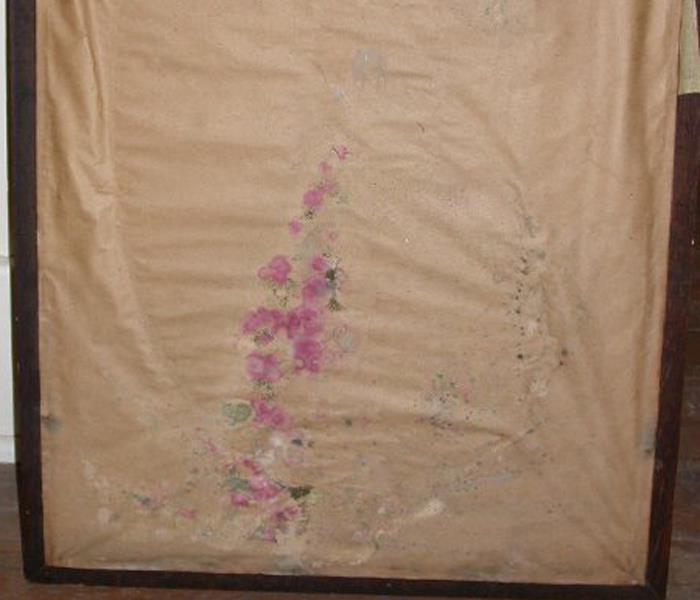 Mold can cause health effects and can also cause significant damage to your property.
Mold can cause health effects and can also cause significant damage to your property.
Mold may seem like a small problem. It’s not as dramatic as a flooded basement or a fire-burned kitchen or a hurricane damaged roof. But make no mistake—mold can be extremely destructive, especially if it strikes a prized collection of yours.
Mold often threatens major artworks. In fact, the National Park Service has published a piece entitled, Mold: Prevention of Growth in Museum Collections. In 2007, the University of Illinois and Urbana-Champaign’s Rare Book and Manuscript Library suffered from a mold outbreak after a spike in humidity — one that took eight months to address. The Boston Public Library faced a mold threat to 500,000 rare books in 2015.
Mold In 14-Year-Old Museum
In February of 2017 the Mark Twain House & Museum in Hartford, Connecticut had thousands of items at risk from mold. And the building housing the threatened items was only 14 years old. It seemed to have started with a leak in the roof.
Mold was found in the storage facilities of the historic home's museum center, tainting at least 5,000 of the museum's 16,000 artifacts. The vulnerable pieces are varied: 19th-century furniture, upholstery, metal, glass and leather items, as well as books, including some Twain first editions and translations, whose fabric and leather bindings are conducive to mold growth. The spread of mold was halted by fixing the roof and repairing the HVAC system. A key, as with all mold situations, is closely monitoring the archive's relative humidity. But monitoring does nothing to combat the existing mold.
Probably like your most treasured possessions, the Twain artifacts are valuable and delicate. They must be handled very carefully and with special skill. Because mold is damaging to artifacts, the mold spores from each affected artifact must be removed as soon as possible. The total cost at the Twain museum? Would you believe a little more than $1 million.
Of course, smaller collections in private homes or businesses face the same threat. But there are proven ways to fight and remove mold.
Your best defense against mold is controlling the internal environment. Typically, mold won't grow below 45 percent relative humidity. So many private and public collections use large dehumidifiers to keep the humidity down.
Most Susceptible To Mold
Artifacts made of organic materials are most susceptible to mold growth. Photographs, letters, documents and other works on paper are safer if you store them in multiple layers of envelopes.
Another key fact to know about mold is how fast it spreads. Very. In as little as 48 hours, mold can quickly become a problem in your home or business when there’s a water intrusion, like a roof leak or leaking water line. Mold can cause health effects and can also cause significant damage to your property. SERVPRO of Bloomfield / Enfield has the training, protective gear, and specialized equipment necessary to handle your mold problem.
You can’t remove all mold. Microscopic mold spores exist almost everywhere, outdoors and indoors. Mold spores are microscopic and float along in the air and may enter your home or business through windows, doors, or AC/heating systems or even hitch a ride indoors on your clothing or a pet. Mold spores can quickly grow into colonies when exposed to water. These colonies may produce allergens and irritants. And before mold remediation can begin, any sources of water or moisture must be addressed. Otherwise, the mold may return.
More Mold Information
Every month on the SERVPRO of Bloomfield/Enfield blog we publish educational articles on how to protect your home and business from disasters and how to deal with mold, fire, water or other damage.
Here For You
The team at SERVPRO of Bloomfield/Enfield has specialized training and experience in water damage restoration services, fire damage restoration services, mold remediation, commercial services, and natural disaster cleanup. Call SERVPRO of Bloomfield/Enfield (860-216-2785) anytime, 24/7.
We've served clients in Avon, Agawam, Bloomfield, Coventry, East Hartford, East Longmeadow, Ellington, Enfield, Farmington, Hartford, Manchester, Newington, Simsbury, South Windsor, Springfield, West Hartford, and beyond.
SERVPRO of Bloomfield/Enfield
100 Peters Road
Bloomfield, Connecticut 06002
IICRC Certified
Ralph DiCristofaro, Nat Landon, Ron DeFeo
Certified SERVPRO technicians
Call 860-216-2785 anytime
How To Clean Mold With Bleach
5/29/2015 (Permalink)
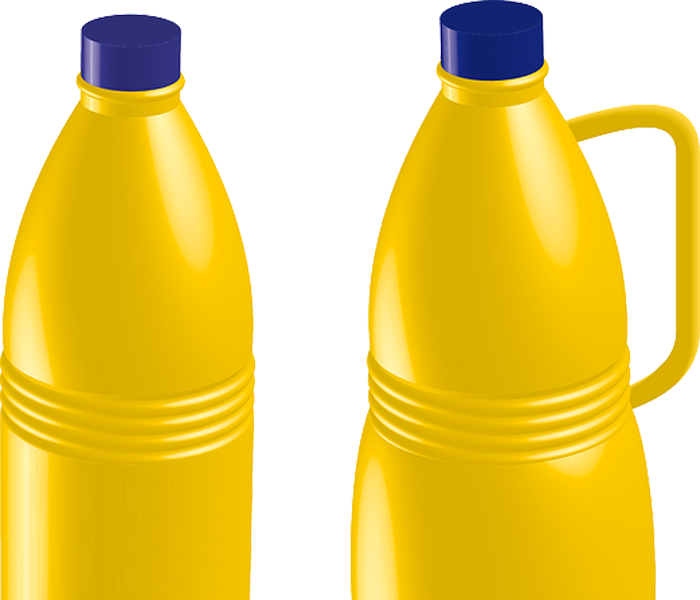 You can clean some mold with bleach but follow the directions carefully.
You can clean some mold with bleach but follow the directions carefully.
You can remove mold with bleach, but be careful. Bleach produces harsh fumes. Before you begin ventilate the area well. Open nearby windows and doors and use a fan to provide fresh air. Protect your hands and arms with long sleeve waterproof gloves. Use eye protection.
Dilute Bleach Before You Apply
For maximum effectiveness and safety, dilute the bleach in water (one part bleach to 10 parts water.) When you’re cleaning mold with bleach don’t mix the bleach with ammonia or any other household cleaner. Apply the solution to non-porous surfaces. Non-porous means the surface doesn’t allow water or other fluids to sink in. Metals are nonporous; paper is not.
You don’t need to rinse afterwards (unless you use the surface for food preparation or unless children or pets may touch it.) By not rinsing, the bleach will inhibit mold growing in the future. If you need to clean more than 10 square feet, check with a commercial mold remediation company.
Be Careful Who You Hire
SERVPRO Bloomfield/Enfield are a commercial mold remediation company. We’re experts in mold spore removal. Be careful whom you hire. Some commercial mold restoration companies advertise, “mold removal” and may even guarantee to remove all mold. This is a fallacy. Removing all molds from a house or business is impossible because microscopic mold spores exist almost everywhere, both indoors and outdoors.
Feel free to call SERVPRO Bloomfield/Enfield anytime, 24/7 at 860.216.2785. We've served clients in Ellington, West Hartford, Avon, Springfield, Manchester, Bloomfield, and beyond. At SERVPRO we’re trained in the safest, most advanced, and quickest ways to help you.
SERVPRO Bloomfield/Enfield
IICRC Certified
Ralph DiCristofaro, Nat Landon, Ron DeFeo
Certified SERVPRO technicians
Call 860.216.2785 24 hour emergency service
Toll Free at 844.254.1480






 24/7 Emergency Service
24/7 Emergency Service




